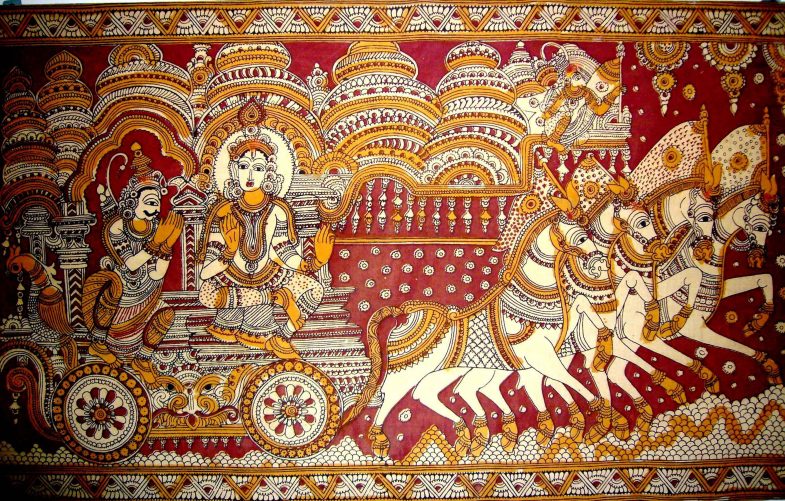৙а•На§∞а§Ња§Ъа•А৮ а§≠а§Ња§∞১а•Аа§ѓ – ৴ড়а§Ха•На§Ја§Њ ৙৶а•Н৲১ড়ুа§Ща•На§Ча•А а§Ха•Ба§∞а•На§µа§Ња§£а§В а§Ъড়৮а•На§Ѓа§ѓ ৵ড়৴а•Н৵৵ড়৶а•Нৃৌ৙а•А৆ а§Ѓа§Єа•Нুড়৮а•На§Єа§В৶а§∞а•На§≠а•З а§≤а§Ха•На§Ја§£а•Аа§ѓа§В ৶а•Г৴а•Нৃ১а•З а•§ а§≠а§∞১ а§≠а•Б৵а•Л ৵ড়৶а•На§ѓа§Њ а§Єа•Н৕ৌ৮ৌ৮ৌа§В ৵а•Нৃ৵৺ৌа§∞а•З а§Ж৮ৃ৮ৌৃ а§Е১а•На§∞а§Єа•Н৕ৌа§Г а§Жа§Ъа§Ња§∞а•На§ѓа§Ња§Г ৐৶а•Н৲৙а§∞а§ња§Ха§∞а§Ња§Г а•§ ১১а•На§∞ৌ৙ড় а§Еа§≠ড়৮৵৪а§∞а§£а•М ৃ১а•На§Єа§Ѓа•Б৶ৃুৌ৮а§В, ৮ড়১а•Нৃ৮а•В১৮а§В ১১а•Н১৶а•З৵ৌ ৵а§Чু৮ৌৃ а§Єа§∞а•Н৵а•За§Ја§Ња§В ৙а•На§∞а§ѓа§Ња§Єа§Г а•§ ৙а•На§∞а§Ња§Ъа•А৮ৌ а§∞а•Н৵ৌа§Ъа•А৮ৃа•Ла§Г а§Єа§Вুড়৴а•На§∞а§£а•З৮, а§Еа§Єа§Ња§Іа§Ња§∞а§£а§Њ ৮а•В১а•Н৮ৌ а§Ха§Ња§Ъ৮ а§Еа§Іа•Нৃৌ৙৮ а§Єа§В৴а•Л৲৮ ৙৶а•Н৲১ড়а§∞১а•На§∞ а§Єа§Ѓа§Ња§ѓа•Ба§Ьа•Нৃ১а•З а•§ ১а§≤а•На§≤а§Ња§≠а§Ња§ѓ а§Жа§Ча§Ъа•На§Ы৮а•Н১а•Б а§Еа§Ѓа•Г১৪а•На§ѓ ৙а•Б১а•На§∞а§Ња§Г, а§≤а§Ња§≠ৌ৮а•Н৵ড়১ৌа§Г ৪৮а•Н১৴а•На§Ъৌ৵ৌ৙а•Н১৪а•На§ѓ а§Ьа•На§Юৌ৮৪а•На§ѓ ৙ৌ১а•На§∞а•За§Ја•Б ৵ড়৮ড়ৃа•Ла§Ча§В а§Ха•Ба§∞а•Н৵৮а•Н১а•Н৵ড়১ড় ৪৙а•На§∞৴а•На§∞а§ѓа§В ৙а•На§∞а§Ња§∞а•Н৕ৃৌু৺а•З а•§
ৃ৶ৌ ৃ৶ৌ а§єа§њ ৶а•Н৵ৃа•Ла§∞а•За§Ха§Єа•На§ѓ а§Ъৃ৮ু৙а•За§Ха•На§Ја•Нৃ১а•З, ১৶ৌ ১৶ৌ ১ৃа•Ла§∞১ড়৴ৃа•З৮ ৙а•На§∞৴৪а•На§ѓа§В ৃ১а•Н১৶а•З৵ а§Ъа•Аৃ১а•З а•§ а§Ха§ња§В а§Ха§∞а•Н১৵а•На§ѓа§В а§Ха§ња§В ৵ৌа§Ха§∞а•Н১৵а•Нৃুড়১ড় а§Єа§Ва§≠а•На§∞а§Ѓа•З а§Ьৌৃুৌ৮а•З а§Ж৙а•Н১৵ৌа§Ха•Нৃৌ৵৲ৌа§∞а§£а•З৮ৌ৕৵ৌ а§Єа§В৶а•З৺৙৶а•За§Ја•Б ৵৪а•Н১а•Ба§Ја•Б ৙а•На§∞а§Ѓа§Ња§£а§Ѓа§®а•Н১а§Га§Ха§∞а§£а§™а•На§∞৵а•Г১а•Н১ৃа§Г а§З১ড় ু১а•Н৵ৌ ৮ড়а§∞а•На§£а§ѓа§Г а§Ха•На§∞ড়ৃ১а•З а§Ь৮а•Иа§∞ড়১ড় ৶а•Га§Ја•На§Яа§Ѓа•Н а•§ ৃ৶ৌ а§Ха•Ба§∞а•Ба§Ха•На§Ја•З১а•На§∞а•З а§Еа§∞а•На§Ьа•Б৮৪а•На§ѓ ু৮৪ড় а§Ха§Ња§∞а•На§ѓа§Ња§Ха§Ња§∞а•На§ѓа§ѓа•Ла§∞а•На§Ѓа§Іа•На§ѓа•З а§Єа§В৶а•За§єа§Г а§Єа§Ѓа•Б১а•Н৙৮а•Н৮а§Г, ৃ৶ৌ а§Ъ а§Єа§Г а§≠а§Ч৵৮а•Н১а§В ৴а•На§∞а•Аа§Ха•Га§Ја•На§£а§В ৴а§∞а§£а§В ৙а•На§∞৙৮а•Н৮৪а•Н১৶ৌ ৴а•На§∞а•Зৃৌ৮а•На§Єа•Н৵৲а§∞а•На§Ѓа•Л ৵ড়а§Ча•Ба§£а§Г ৙а§∞а§Іа§∞а•Нুৌ১а•На§Єа•Н৵৮ড়ৣа•Н৆ড়১ৌ৶ড়১ড় ৵ড়৮ড়৴а•На§Ъа§ѓа§Г ৴а•На§∞а•Аু৶а•На§≠а§Ч৵৶а•На§Ча•А১ৌ৪а•Б ৙а•На§∞১ড়৙ৌ৶ড়১а§Г а§≠а§Ч৵১ৌ ১৶৮а•Ба§Єа§Ња§∞а§Юа•На§Ъа§Ња§∞а•На§Ьа•Б৮а§Г а§ѓа•Б৶а•На§Іа§Ња§ѓ , а§Єа•Н৵৲а§∞а•Нুৌ৮а•Ба§Ја•Н৆ৌ৮ৌৃ ৙а•На§∞а•За§∞ড়১а§Г а•§
৙а•На§∞а§Ња§ѓа§Г а§Єа§∞а•Н৵а•За§Ја§Ња§В а§Ьа•А৵৮а•З а§П১ৌ৶а•Г৴а•А а§Е৵৪а•Н৕ৌ а§Єа§Ва§Ьৌৃ১а•З а•§ ৵ড়৴а•Зৣ১ৃৌ а§Ыৌ১а•На§∞а§Ња§£а§Ња§В а§Ьа•А৵৮а•З а§Па§Ја§Њ а§Єа§Ѓа§Єа•На§ѓа§Њ ৙а•На§∞ৌ৶а•Ба§∞а•На§≠৵১ড় а§Хড়৴а•Ла§∞ৌ৵৪а•Н৕ৌ৵৪ৌ৮а•З а§ѓа•Б৵ৌ৵৪а•Н৕ৌа§∞а§Ѓа•На§≠а•З а§Ъ а•§ а§Ха§ња§Ѓа§Іа•На§ѓа•З১৵а•На§ѓа§В а§Ха§ња§В ৵ৌа§≠а•Нৃ৪৮а•Аৃুড়১ড় ৵ড়ৣৃа•З ৐৺৵а§Г ৵ড়৙а•На§∞১ড়৙১а•Н১ৃа§Г а§≠৵৮а•Н১ড় ১а•За§Ја§Ња§В ু৮৪ড় а•§ ৙а§∞а§ња§Ъড়১ৌ৮ৌа§В, ুড়১а•На§∞а§Ња§£а§Ња§В а§Й৙৶а•З৴а§Хৌ৮ৌа§В ু১ু১ৌ৮а•Н১а§∞а§Ња§£а§њ ৴а•На§∞ৌ৵а§В ৴а•На§∞ৌ৵а§В ৵ড়ুа•В৥ৌ а§≠৵৮а•Н১ড় ১а•З, а§ѓа•Ла§Ча•На§ѓа§В ৮ড়а§∞а•На§£а§ѓа§Ѓа§µа§Ња§™а•Н১а•Ба§Ѓа§Ха•Нৣুৌ৴а•На§Ъ а§≠৵৮а•Н১ড় а•§
WhatвАЩs the Best?вАЭ This was the question posed by Arjuna to Sri KбєЫбє£бєЗa on the battlefield of Kurukshetra. We all face such dilemmas in our life; more so todayвАЩs youth. After higher secondary or 12th class, a student has multi-pronged path in front of him/her. Which path to choose? The frequently trod one or the lesser trod way is the problem. Sometimes the problem could be to choose between the desired line and the beneficial one, ৙а•На§∞а•За§ѓа§Єа•Н and ৴а•На§∞а•За§ѓа§Єа•Н. At other times, it could be between the empirical prosperity and spiritual advancement. Every time one needs a guardian, a friend and philosopher to guide one towards the right path. At Chinmaya Vishwavidyapeeth, a deemed-to-be University under de novo category, such questions will be addressed by examining the vision and mission of the University and through the words of spiritual masters (guru-paramparƒБ?), Swami Chinmayanandaji (Pujya Gurudev, through his inspiring lectures), Swami Tejomayanandaji (Pujya Guruji), Swami Swaroopanandaji (Chancellor of the University and Global Head, Chinmaya Mission) as well as the input of our eminent faculty.
I am happy to be launching the new CVV blogs which we have named вАЬа§ѓа§Ъа•На§Ыа•На§∞а•За§ѓ:? WhatвАЩs Best?вАЭ Please use this blog to reflect on WhatвАЩs the best in ________ (fill in the blanks).
For instance, вАЬWhatвАЩs the best in Psychology?вАЭ, вАЬWhat is the need to learn psychology?вАЭ, вАЬWhat areas of research look promising? HowвАЩs it connected with mental health? Or вАЬWhatвАЩs Best for IndiaвАЭвА¶. In politics, in government, in policy?
Commerce and management are the key words to success in this era. WhatвАЩs best in these programmes at CVV with a healthy dose of ancient Indian tradition? WhatвАЩs best in the writings of Kautilya or Kotler?
And when we ask that вАЬWhatвАЩs bestвАЭ in Pa√±catantra, or BhagavadgƒЂtƒБ, your reflections and discussions can be insightful.
What is best for the student? WhatвАЩs best for the faculty, for office staff? I am sure our top management can also reflect on вАЬWhatвАЩs best for CVV, now and in the future?вАЭ The questions are endless, the answers will be fascinating.
We welcome contributions from the students, faculty and staff on the website of CVV.
Let this question вАЬа§ѓа§Ъа•На§Ыа•На§∞а•За§ѓ? WhatвАЩs best?вАЭ be the trigger for inspiration in all fields as we enquire, explore, explain and elaborate on the unknown, demystify certain notions, enhance the latent skills and undertake myriad constructive activities; intellectual, social, emotional, cultural, philosophical, psychological and spiritual.
So, ask yourself вАУ вАЬа§ѓа§Ъа•На§Ыа•На§∞а•За§ѓ? WhatвАЩs best?вАЭ Look forward to reading your submissions.

